Nazis after Hitler
Nazis after Hitler
How Perpetrators of the Holocaust Cheated Justice and Truth
Donald M. McKale
ROWMAN & LITTLEFIELD PUBLISHERS, INC.
Lanham Boulder New York Toronto Plymouth, UK
Published by Rowman & Littlefield
4501 Forbes Boulevard, Suite 200, Lanham, Maryland 20706
www.rowman.com
10 Thornbury Road, Plymouth PL6 7PP, United Kingdom
Copyright 2012, 2014 by Rowman & Littlefield Publishers, Inc.
The maps on pp. xxivxxvi are from The Columbia Guide to the Holocaust , edited by Donald Niewyk and Francis Nicosia. Copyright 2000 Columbia University Press. Reprinted with permission of the publisher.
All rights reserved . No part of this book may be reproduced in any form or by any electronic or mechanical means, including information storage and retrieval systems, without written permission from the publisher, except by a reviewer who may quote passages in a review.
British Library Cataloguing in Publication Information Available
The Library of Congress has cataloged the hardcover edition as follows:
McKale, Donald M., 1943
Nazis after Hitler : how perpetrators of the Holocaust cheated justice and truth / Donald M. McKale.
p. cm.
Includes bibliographical references and index.
1. Holocaust, Jewish (19391945)Influence. 2. War crime trialsGermany History20th century. 3. NazisHistory20th century. 4. Nuremberg Trial of Major German War Criminals, Nuremberg, Germany, 19451946. 5. World War, 19391945Atrocities. I. Title.
D804.3.M396 2012
341.690268dc23
2011030240
ISBN 978-1-4422-1316-6 (cloth : alk. paper)
ISBN 978-1-4422-1317-3 (pbk. : alk. paper)
ISBN 978-1-4422-1318-0 (electronic)
 The paper used in this publication meets the minimum requirements of American National Standard for Information SciencesPermanence of Paper for Printed Library Materials, ANSI/NISO Z39.48-1992.
The paper used in this publication meets the minimum requirements of American National Standard for Information SciencesPermanence of Paper for Printed Library Materials, ANSI/NISO Z39.48-1992.
Printed in the United States of America
Preface
O n May 1, 1945, the late-night bulletin from German radio told the world what it had waited far too long to hear: Adolf Hitler had died in Berlin, fighting to the last breath against Bolshevism. Eventually, the world would learn the truth. Fearful of being caught by the Soviets, paraded in a cage to Moscow, and there forced to answer for the global bloody chaos hed wrought, the Nazi dictator had killed himself. He did so while cowering in a bunker deep below the center of the physically razed Nazi capital. Six days after the radio announcement, Germany surrendered in France to the British and Americans, and on May 9 in Berlin to the Russians.
But now, what would the world do when confronted by the unimaginable? Other questions abounded in May 1945 as World War II ended in Europe. Hitler had started the war in September 1939 when his German armies invaded Poland. Now, with the war over, what did the world realize about what had happened amid the largest armed struggle in history, and what did it already know?
During the conflict, one of the warring nations had done something unprecedented. Nazi Germany, mainly for the reason of racial hatred, singled out an entire people for total physical extermination and, under the cover of a massive war, murdered in systematic fashion nearly six million of that people. The dead were victims of the longest andin this instancemost fanatical hatred yet known toward a single people: anti-Semitism.
How would the postwar world respond to the Holocaust? What would happen to its several hundred thousand Jewish survivors left in Europe? Tragically, they found little sympathy for what they had sufferedand continued to sufferfrom a world exhausted by the largest, deadliest war in history. Some survivors even encountered a persistentoften violent and fatalpostwar anti-Jewish hatred, a hatred that still thrives today in much of the world.
And what about the perpetrators of the Holocaustthe killers and their accomplices? What would happen to them after the defeat and death of Hitler, their Fhrer, whom they had worshiped and followed so loyally in carrying out the genocide? Would the principal Allied victors of the world warthe United States, Britain, and Soviet Unionbring Nazi and other war criminals to justice, as they had promised during the fighting?
Sadly, in contrast to popular belief widely held yet today, scholars of the subject excepted, only in a relatively few cases. For a variety of reasons, many chronicled in this book, the postwar world felt little obligation to ferret out and bring the perpetrators to justice. Consequently, the vast majority of them escaped punishment. For the great bulk of the perpetrators, the acclaimed historian Raul Hilberg wrote in his monumental history of the Holocaust, there is no report. Most were simply by-passed [by Allied and later German authorities]. By the law they had not lived. By the law they did not die.
When one thinks of the Holocaust and survival, one imagines Jews who somehow lived through the horrific ordeal. The present book, however, examines an entirely different and wholly unfortunate dimension of survival related to the Holocaustperpetrators of the event who numbered several hundred thousand and who lived after the world war ended but were only rarely, if ever, called to account for their crimes. One scholar has estimated that, since the war, of approximately 100,000 people investigated in Germany suspected of committing mass murder and participating in the Holocaust, only about 6,500 were actually brought to trial, and the large majority of these before 1949.
First, the overwhelming majority of perpetrators acted after the war with impunity and, without Hitler, whom they had followed blindly and so relied on for their positions of power, enjoyed postwar lives of relative comfort, free of consequences or guilt. Others perished of natural causes: heart attacks, old age, dying quietly in their sleep.
Second, most of the relatively few who were judged were brought to justice only long after the war and given minimal prison sentences nowhere near commensurate with their crimes. And even these verdicts and vexingly light prison terms the courts later reduced or rejected outright. This resulted from pressures brought to bear by the Allies, German politicians, their resentful or exhausted constituencies, and even the perpetrators seeking exoneration (not to mention their pensions), as the Cold War grew less temperate.
Third, the overwhelming majority of the perpetrators denied any guilt in and expressed no remorse for what theyd done. Even those few who were brought to trial quickly and executedlike the perpetrators discussed in chapters 3 and 4 at the 1945 Belsen trial and in chapters 8, 9, and 13 at trials in Nuremberg and elsewhere after 1945went to their deaths unrepentant.
Why should all this matter? Because in the ideological war waged on the post-Holocaust world by the surviving perpetrators, both justice and truth were the first casualties.
Nearly every postWorld War II claim of Holocaust perpetrators, insisting on their innocence in what happened, found its way into the mythology of postwar Holocaust denial. Such denial is the most hateful and dangerous new element, along with the violent hatred directed toward Israel by anti-Semites and anti-Zionists, in the post-Holocaust worlds racial and anti-Jewish views.
Beginning in 1945, whether placed on trial or living in freedom, the perpetrators carried on what amounted to a massive, never-ending postwar ideological, even propaganda, campaign against Jews. The perpetrators, no longer able to pursue the racial war of systematic mass murder of the Jews they had waged during World War II, continued the attack on those whom they hated the most by cheating both justice for and the truth about what the perpetrators had done. Nearly all the perpetrators declared they had done nothing wrong, that they had not known about the Jewish persecution until the wars end, and that they had little or no responsibility or guilt for what happened. But in making these and other claims denying their involvement in the Holocaust, they in fact justified the Nazi atrocities and anti-Semitism.
Next page
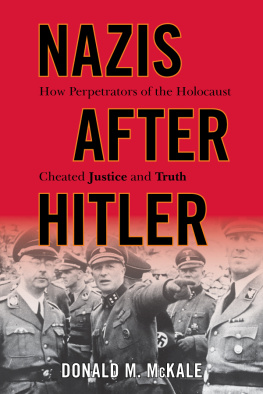
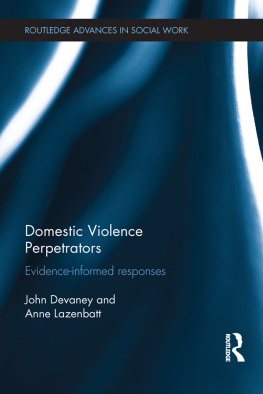
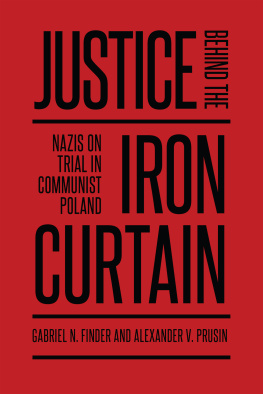

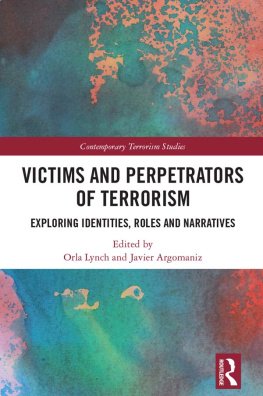

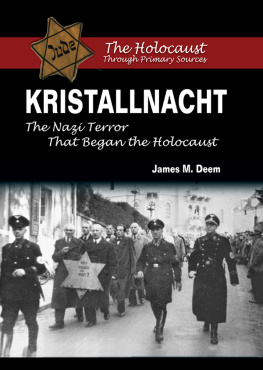


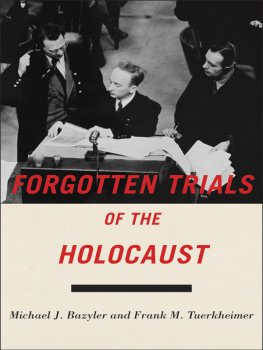
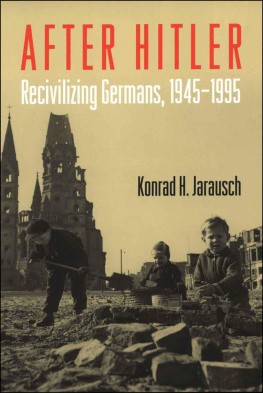
 The paper used in this publication meets the minimum requirements of American National Standard for Information SciencesPermanence of Paper for Printed Library Materials, ANSI/NISO Z39.48-1992.
The paper used in this publication meets the minimum requirements of American National Standard for Information SciencesPermanence of Paper for Printed Library Materials, ANSI/NISO Z39.48-1992.